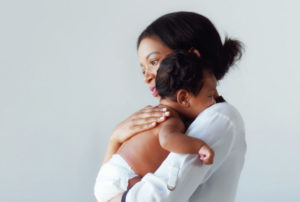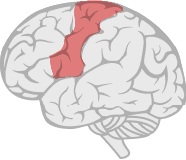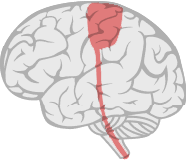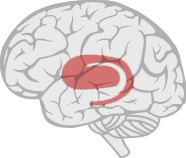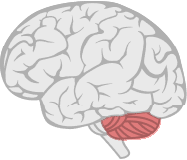What is mixed cerebral palsy?
Mixed cerebral palsy occurs when a child exhibits symptoms of more than one type of cerebral palsy. Children diagnosed with mixed type cerebral palsy have sustained damage to the motor control centers in several parts of the brain.
Mixed type cerebral palsy is the second most common form of the condition and accounts for 15.4% of all cerebral palsy cases.
Symptoms of mixed cerebral palsy vary based on the location of movement impairments and the resulting combination of cerebral palsy types. These movement problems can occur in the legs (diplegia), one-half of the body (hemiplegia), or all four limbs (quadriplegia).
Some cases of brain injuries leading to mixed cerebral palsy are preventable and caused by medical negligence. Your family may be eligible to pursue legal action if you believe your child's injuries could have been prevented.
Causes of mixed cerebral palsy
Brain damage is the main cause of cerebral palsy. Injuries to the various motor control centers of the developing brain can lead to different types of cerebral palsy.
Brain damage can be caused by:- Infections before or after birth
- Lack of oxygen at birth (hypoxia)
- Stroke suffered during birth
- Toxic poisoning such as methylmercury
- Traumatic head injury in first years of life
There are several risk factors that may increase the likelihood of a baby developing cerebral palsy. These include severe jaundice, placental failure, prenatal or maternal infection, and bleeding in the brain.
Mixed cerebral palsy and types of brain damage
The main characteristic of mixed cerebral palsy is the presence of brain damage in multiple motor control centers of the brain. The area or areas of the brain that are damaged will influence a child’s movement limitations and abnormalities in brain development.
Damage to motor cortex
 Associated with spastic cerebral palsy
Associated with spastic cerebral palsyMotor cortex damage can cause tight, rigid muscles, joints, and tendons. This type of brain damage is associated with spastic cerebral palsy.
The motor cortex controls movement by sending signals from the motor cortex to the other parts of the brain that regulate motor control. The signals are passed to the nerves in the muscles.
Damage to pyramidal tracts
 Associated with spastic cerebral palsy
Associated with spastic cerebral palsyDamage to this part of the brain can cause the motor cortex to unsuccessfully transmit signals to the pyramidal tracts (nerves that help control voluntary muscle movement), resulting in mobility issues. This type of brain damage is also associated with spastic cerebral palsy, where muscles are tight and rigid.
Damage to basal ganglia
 Associated with athetoid cerebral palsy
Associated with athetoid cerebral palsyThe basal ganglia are a group of several types of neurons (nerve cells) in the center of the brain. The basal ganglia process signals from the motor cortex before sending them along to the brainstem.
Basal ganglia damage can cause issues with involuntary movement, lack of muscle control, and fluctuating muscle tone. Damage to this area of the brain can cause athetoid cerebral palsy symptoms.
Damage to cerebellum
 Associated with ataxic or athetoid cerebral palsy
Associated with ataxic or athetoid cerebral palsyDamage to the cerebellum can cause ataxic or athetoid cerebral palsy symptoms. Since the cerebellum controls balance and coordination, children with cerebellum damage may experience issues with posture, walking, and fine motor skills.
Mixed type cerebral palsy symptoms
Because each case of cerebral palsy differs in severity and type of movement problems, mixed cerebral palsy symptoms can vary greatly depending on your child’s unique diagnosis.
The main signs of mixed cerebral palsy are issues with movement, imbalance, and lack of coordination. It can also cause abrupt and convulsive movements from rigid muscles (spasticity). Further, one of the biggest neurological effects of mixed cerebral palsy is missing important developmental milestones.
Other common symptoms of mixed cerebral palsy include:- Abnormal reflexes
- Exaggerated, jerky movements
- Issues with coordination
- Poor posture
- Tremors or shakiness
Although children with mixed type cerebral palsy can experience any of the types of the condition, the most common types of mixed cerebral palsy are spastic/athetoid and spastic/ataxic.
Different types of cerebral palsy
The symptoms of the types of cerebral palsy can be found in children diagnosed with mixed type cerebral palsy.
- Athetoid/dyskinetic cerebral palsy: Variations in loose and stiff muscles, causing rigidity and floppiness
- Ataxic cerebral palsy: Issues with balance and coordination that affect normal movement
- Hypotonic cerebral palsy: Low muscle tone, floppy muscles resulting in issues with voluntary movement
- Spastic cerebral palsy: High muscle tone, causing stiffness and jerky movement
Treatment for mixed cerebral palsy
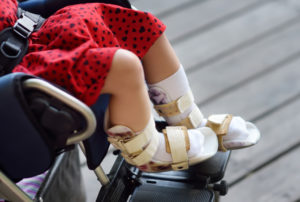
The goal of mixed type cerebral palsy treatment is to manage pain and encourage independence as your child transitions in adulthood. Treatment can vary for each child depending on their symptoms, and some children will require several forms of treatment.
Doctors will create a care plan with treatment options designed to help manage cerebral palsy symptoms. Treatments may include physical therapy, speech therapy, occupational therapy, alternative therapy, medication, surgery, and more.
Mobility aids and assistive devices are also forms of treatment to help children with cerebral palsy move independently and communicate more effectively. There are several options for financial assistance to help your family pay for your child’s treatment.
Physical therapy
In physical therapy for mixed cerebral palsy, therapists use strength training, flexibility exercises, massage therapy, and assistive devices to improve mobility.
There are several alternative forms of physical therapy to treat mixed type cerebral palsy, such as aquatic and equine therapies.
Occupational therapy
Occupational therapy can help children with mixed cerebral palsy to improve motor control and bilateral coordination by using games, toys, and books. The goal of occupational therapy is to help children complete everyday tasks and become more independent in daily life.
Speech therapy
Some children with mixed cerebral palsy experience limited communication and feeding and/or swallowing issues. Speech therapy uses language skills, word association, articulation therapy, as well as jaw and breathing exercises to improve oral skills.
Medication
There are many kinds of medications prescribed to treat mixed cerebral palsy symptoms. Some medications help to control motor function. Medication can also treat co-occurring conditions such as seizures and behavioral disorders.
Anticholinergic medications have proven effective at managing uncontrolled body movements by blocking nerve signals that tell a muscle to move, reducing sudden and involuntary movements.
Surgery
Surgery can be beneficial to children with severe athetoid cerebral palsy symptoms. Additionally, children with spasticity are more likely to be recommended for surgery to relieve painful contractures and improve overall movement.
Learn more about mixed type cerebral palsy
It is important to connect with a cerebral palsy specialist as soon as you believe your child may have developed the condition. Cerebral palsy doctors and specialists can give your child an accurate diagnosis and start them on a treatment plan as soon as possible.
To learn more about mixed cerebral palsy, download our free Cerebral Palsy Guide, which contains in-depth information for parents and caregivers.

